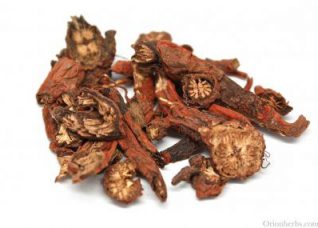
MinerAlert

MinerAlert
Salvia miltiorrhiza
Lamiaceae
Chinese salvia, Chinese sage, red-rooted sage, tan shen

The plant is native to Viet Nam and China
Root
Currently, tablets and capsules containing Dan shen root, alone or in combination with other herbs, are available in commerce.
Dan shen root has been used for millennia in Traditional Chinese Medicine, alone or in combination with other medicinal plants for a variety of ailments, including heart disease (angina pectoris), kidney disease, irregular menstruation and other related problems (amenorrhea, dysmenorrhea), insomnia, irritability, inflammation, and blood stagnation (circulatory problems). The constituents found in the root may also help to adapt (adaptogenic action) to various types of stress, as well as prevent or treat osteoporosis (Su et al., 2015; Guo et al., 2014; Quattrocchi, 2012; Tang and Eisenbrand, 2011). Experiments in mice have shown that Dan shen root extracts may have protective effects on heart tissue (Ai et al., 2015).
More than 100 phytochemical compounds have been isolated from this plant (Guo et al, 2014), but the major lipid-soluble phytochemical constituents of Dan shen are called tanshinones. The three primary bioactive tanshinones include tanshinone I (TNI), tanshinone IIA (TNIIA), and cryptotanshinone (CPT). These compounds exhibit anti-inflammatory, anticancer, and cardio-cerebrovascular protective actions (Chen et al., 2014). Unfortunately, these compounds have poor solubility and low dissolution rate. Therefore, this limits the clinical applications of TNI, TNIIA, and CPT. However, Cai et al. (2016) mention that loading tanshinones onto nanoparticles, micro-emulsions, cyclodextrin inclusions, liposomes, and solid dispersions, among other options, may serve to improve their application for various health problems.
Safety/Precautions:
Before you decide to take any medicinal herb or herbal supplement, be sure to consult with your health care professional first. Avoid self-diagnosis and self-medication: Always be on the safe side!